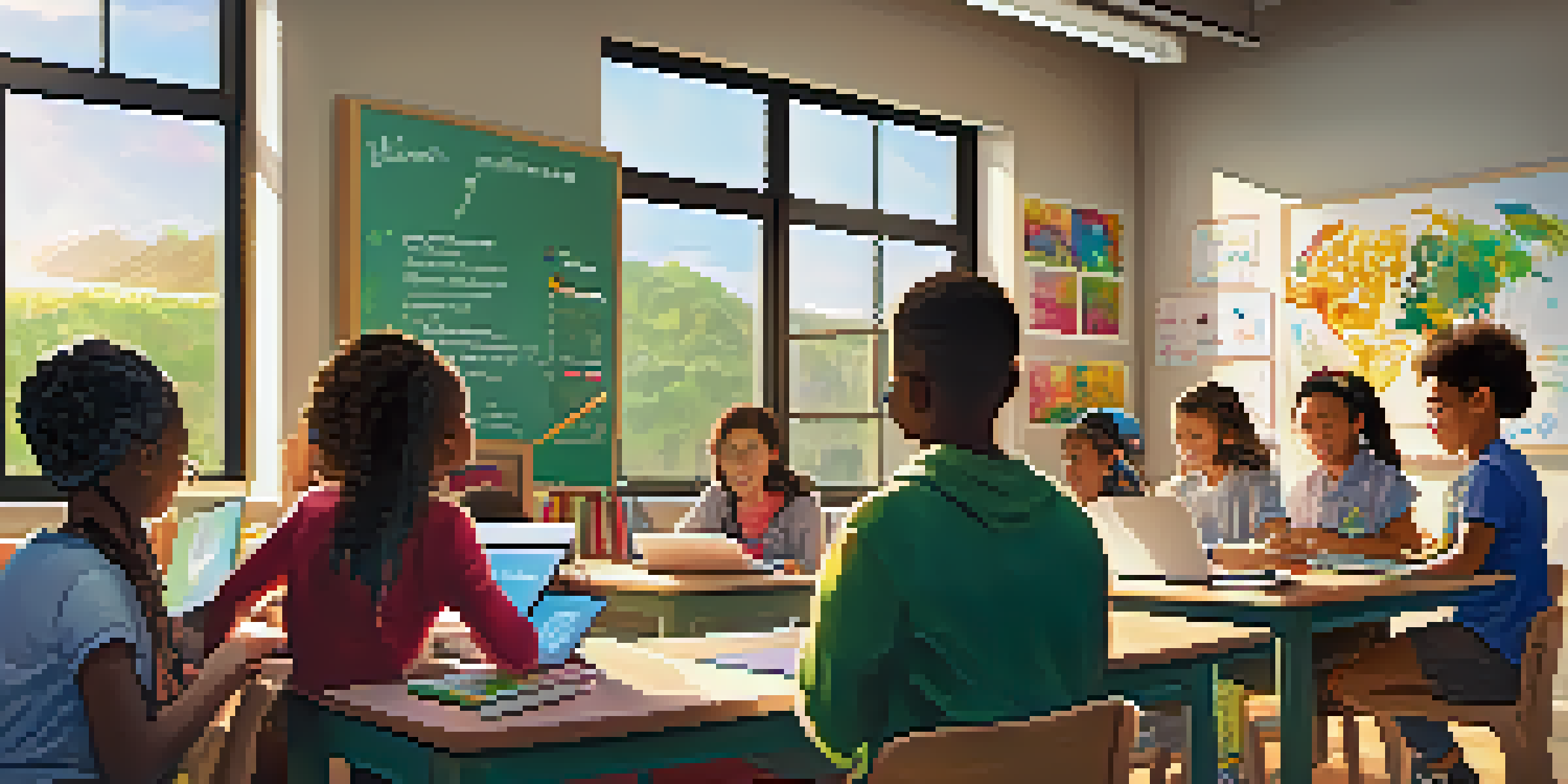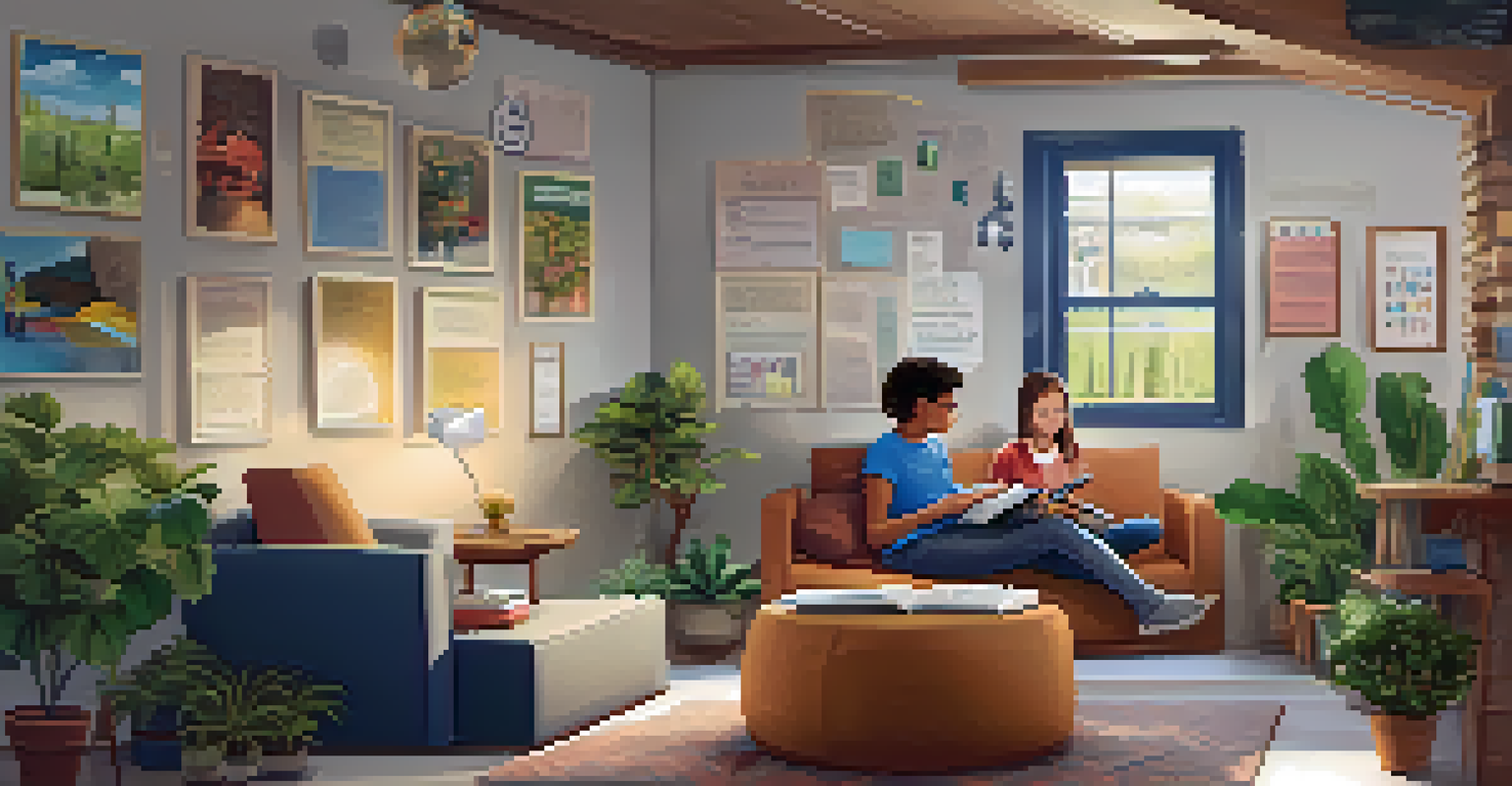Customization in Blended Learning: Adapting to Student Needs

Understanding Blended Learning and Its Importance
Blended learning combines traditional face-to-face instruction with online learning, creating a flexible educational experience. This approach allows educators to use technology to enhance teaching and engage students in new ways. By mixing various methods, blended learning can cater to different learning styles and preferences.
Blended learning is not just a way to deliver content but a way to engage students in the learning process.
One of the key benefits of blended learning is its adaptability, making it easier to personalize education for each student. For instance, a visual learner might benefit from video content, while a kinesthetic learner thrives on hands-on activities. This adaptability is crucial in a diverse classroom, where students often have varied backgrounds and abilities.
As educators embrace blended learning, they can better address the specific needs of their students. This means not just delivering content but also ensuring that every student has the support and resources they need to succeed. Customization in blended learning is about empowering students to take charge of their education.
Identifying Student Needs for Customization
To effectively customize blended learning experiences, educators must first understand the unique needs of their students. This can involve gathering data through assessments, surveys, and observations to identify strengths and challenges. Understanding these needs is akin to a doctor diagnosing a patient before prescribing a treatment.

Once educators have a clear picture of their students' needs, they can tailor instructional methods accordingly. For example, if a student struggles with reading comprehension, an educator might provide additional resources or alternative formats to help them grasp the material better. This data-driven approach can significantly improve learning outcomes.
Blended Learning Enhances Engagement
By combining traditional and online methods, blended learning caters to diverse student needs and learning styles.
Moreover, it's essential to involve students in this process. By encouraging students to voice their preferences and challenges, educators can create a more inclusive environment. This collaboration not only helps in customizing learning but also fosters a sense of ownership among students.
Leveraging Technology for Personalization
Technology plays a pivotal role in customizing blended learning environments. Learning management systems (LMS) and educational apps allow for tailored content delivery and tracking of student progress. For instance, platforms like Google Classroom or Canvas enable educators to assign different tasks based on individual student needs.
The future of education is not about learning in isolation but about collaboration and customization.
Additionally, adaptive learning technologies can assess student performance in real-time and adjust the difficulty level accordingly. This ensures that students are neither bored with material that’s too easy nor overwhelmed by content that’s too challenging. It's like having a personal tutor available around the clock.
However, it’s crucial for educators to choose the right tools that align with their learning objectives. Not all technology is created equal, and the best tools will enhance the learning experience without adding unnecessary complexity. This thoughtful integration of technology can lead to a more engaging and effective blended learning experience.
Creating Flexible Learning Paths
One of the strengths of blended learning is the ability to create flexible learning paths for students. This means that rather than following a one-size-fits-all curriculum, students can progress at their own pace based on their understanding and mastery of the material. Imagine a scenario where students can explore topics that interest them while still meeting curriculum standards.
Such flexibility not only fosters independence but also helps students take charge of their learning journey. For example, a student interested in science might delve deeper into a project on renewable energy while still completing necessary math assignments. This approach keeps students engaged and motivated.
Technology Personalizes Education
Utilizing learning management systems and adaptive technologies allows educators to tailor content delivery and track student progress effectively.
Creating these flexible paths requires careful planning and support from educators. Teachers must be adept at guiding students through their choices and ensuring that all learning objectives are met. When done correctly, this strategy can lead to improved academic performance and increased student satisfaction.
Incorporating Diverse Learning Materials
Customization in blended learning also involves incorporating diverse learning materials to cater to various student preferences. This can include videos, podcasts, interactive simulations, and traditional texts, allowing students to choose how they engage with the content. Think of it as offering a buffet of learning resources to satisfy every palate.
By providing varied resources, educators can accommodate different learning styles and interests. For instance, a student who enjoys storytelling may prefer podcasts, while another student might find visual aids more helpful. This diversity not only makes learning more enjoyable but also enhances comprehension and retention.
Additionally, it allows students to explore topics in depth, encouraging a love for learning. When students can interact with materials that resonate with them, they are more likely to stay engaged and motivated to learn. This approach nurtures a more inclusive learning environment where everyone can thrive.
Continuous Assessment and Feedback Loops
In a customized blended learning environment, continuous assessment is crucial for understanding student progress and making necessary adjustments. Regular check-ins and formative assessments provide valuable insights into how students are grasping the material. By monitoring progress, educators can quickly identify areas where students may need additional support.
Feedback loops are equally important, allowing students to understand their strengths and areas for growth. When students receive timely and constructive feedback, they can make adjustments to their learning strategies. This process is much like a coach guiding an athlete to improve their performance through tailored advice.
Supportive Community Boosts Learning
Fostering a collaborative learning environment encourages peer interaction, enhancing understanding and retention among students.
Moreover, leveraging technology for assessments can streamline this process. Online quizzes and interactive assignments can provide instant feedback, allowing students to reflect on their learning in real-time. This ongoing dialogue between educators and students fosters a growth mindset, where learning is seen as a continuous journey.
Building a Supportive Learning Community
Customization in blended learning extends beyond just individual student needs; it also involves fostering a supportive learning community. Collaborative projects and group activities encourage peer-to-peer learning, which can enhance understanding and retention. Students often learn best when they can discuss and share ideas with their classmates.
Creating an inclusive environment where students feel comfortable sharing their thoughts is essential. When students know they are part of a supportive community, they are more likely to engage and take risks in their learning. This sense of belonging can motivate students to participate actively in their education.

Educators play a crucial role in nurturing this community spirit. By facilitating discussions and encouraging collaboration, teachers can help build strong relationships among students. Ultimately, a supportive learning community enhances the blended learning experience, making it more enriching and effective for everyone involved.